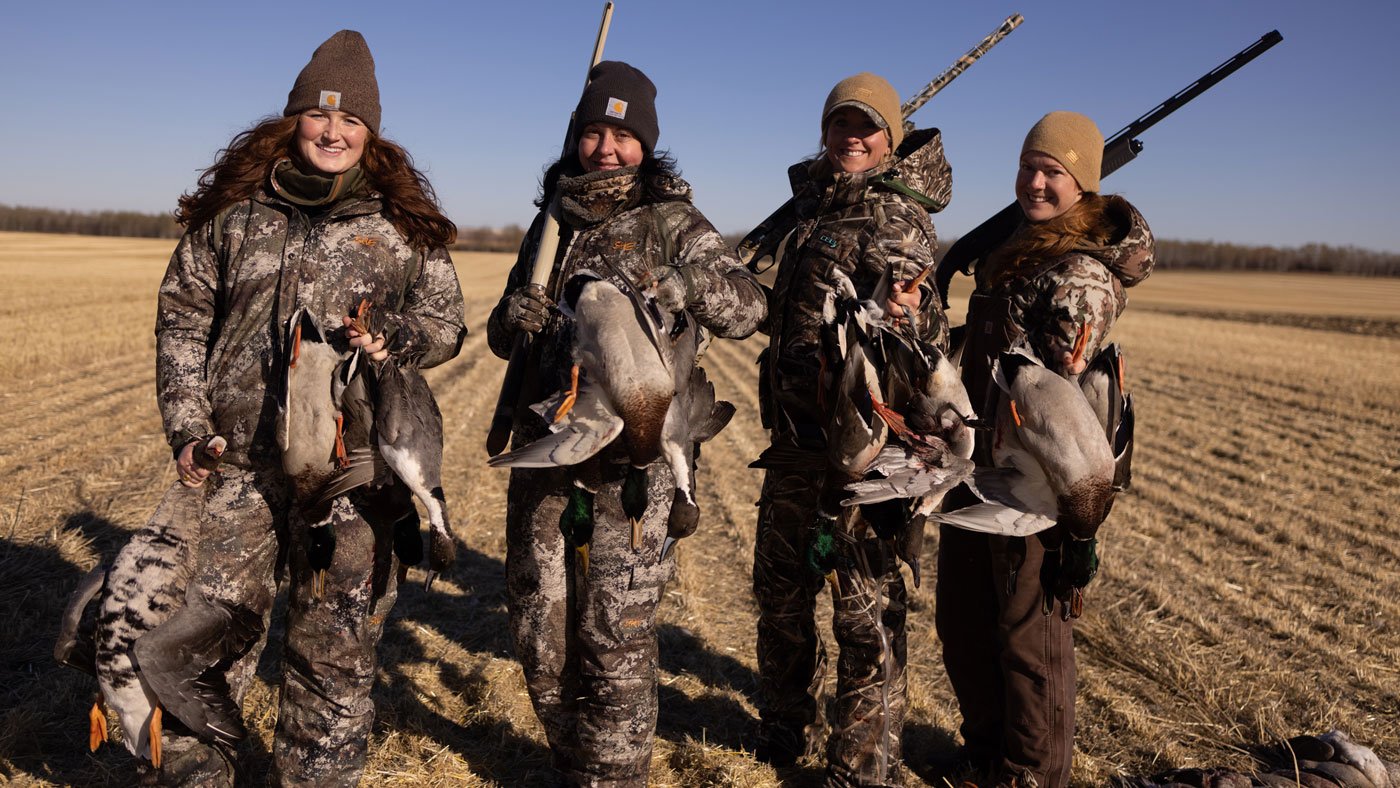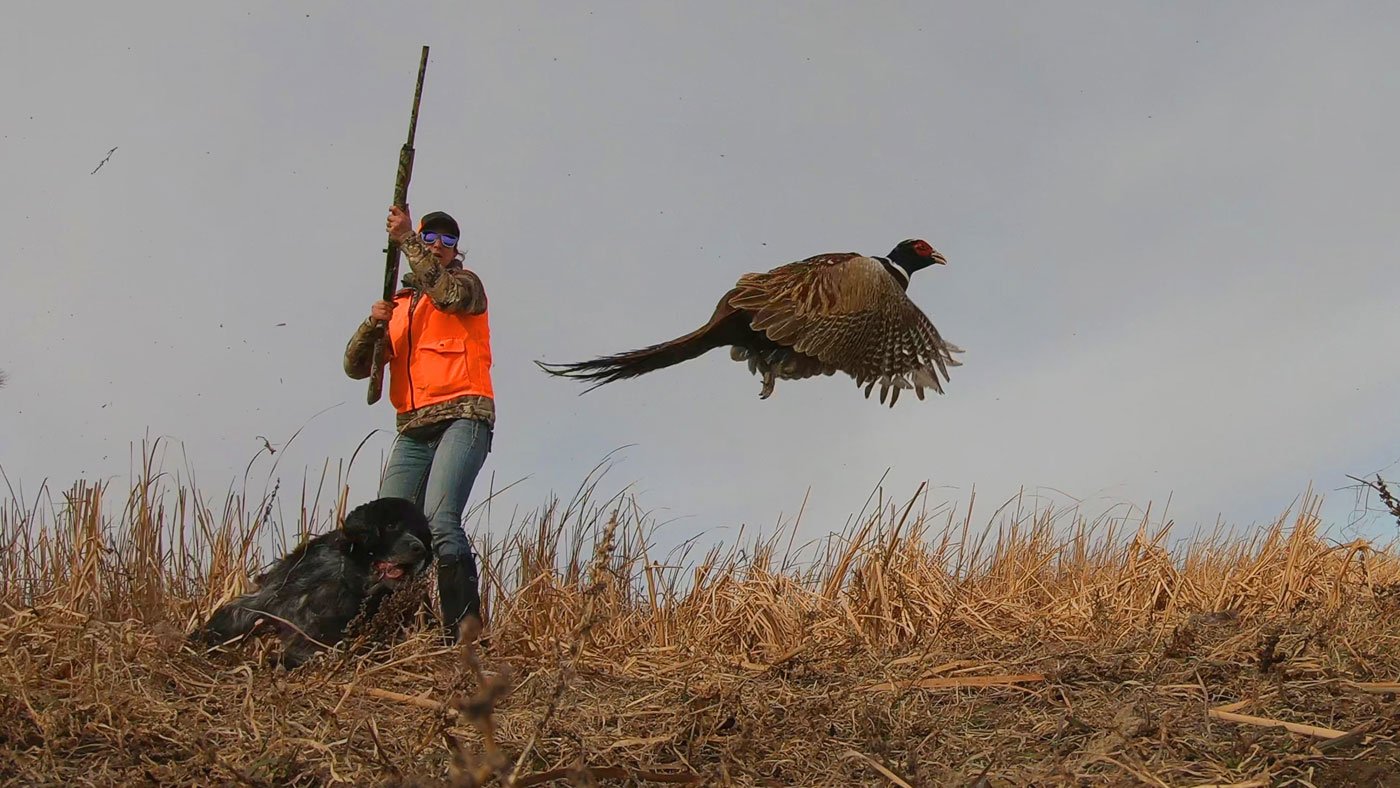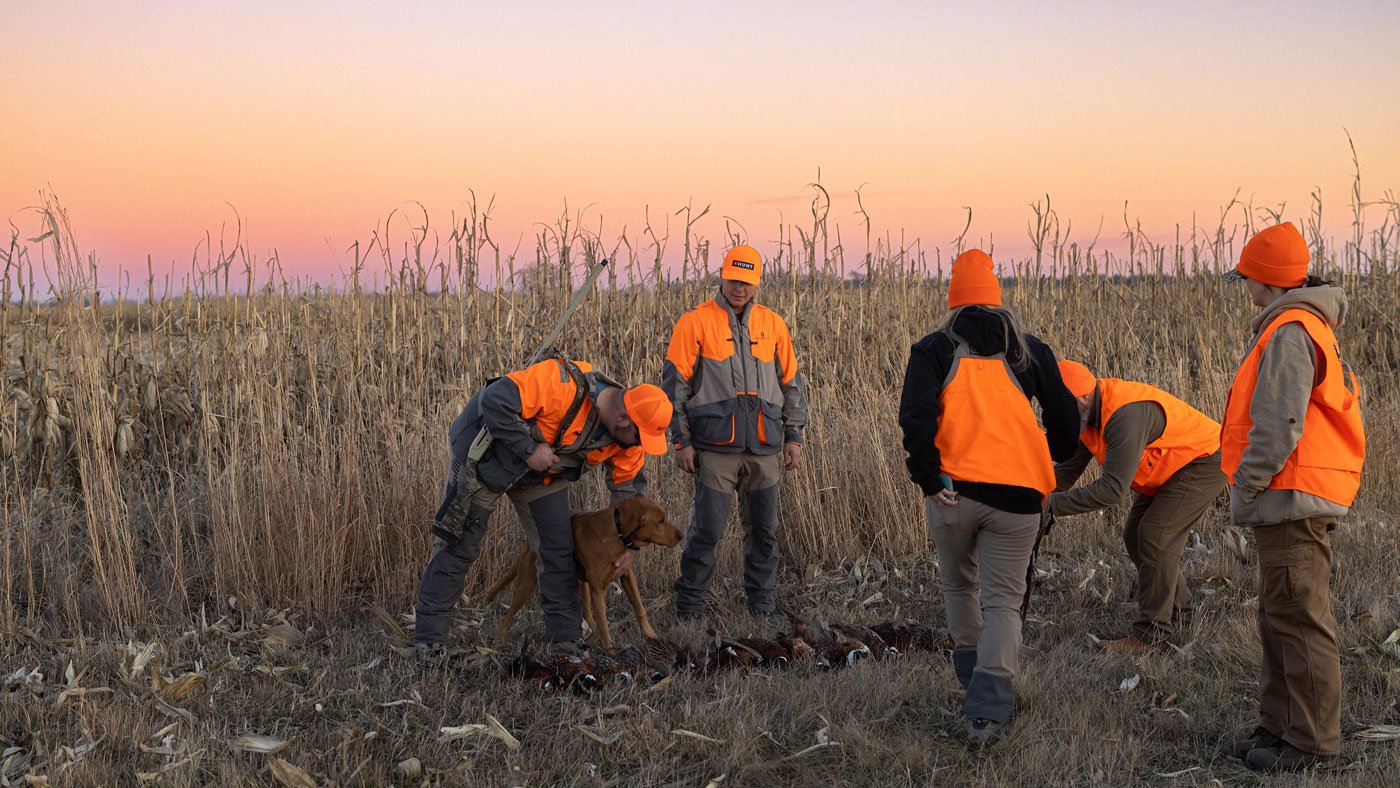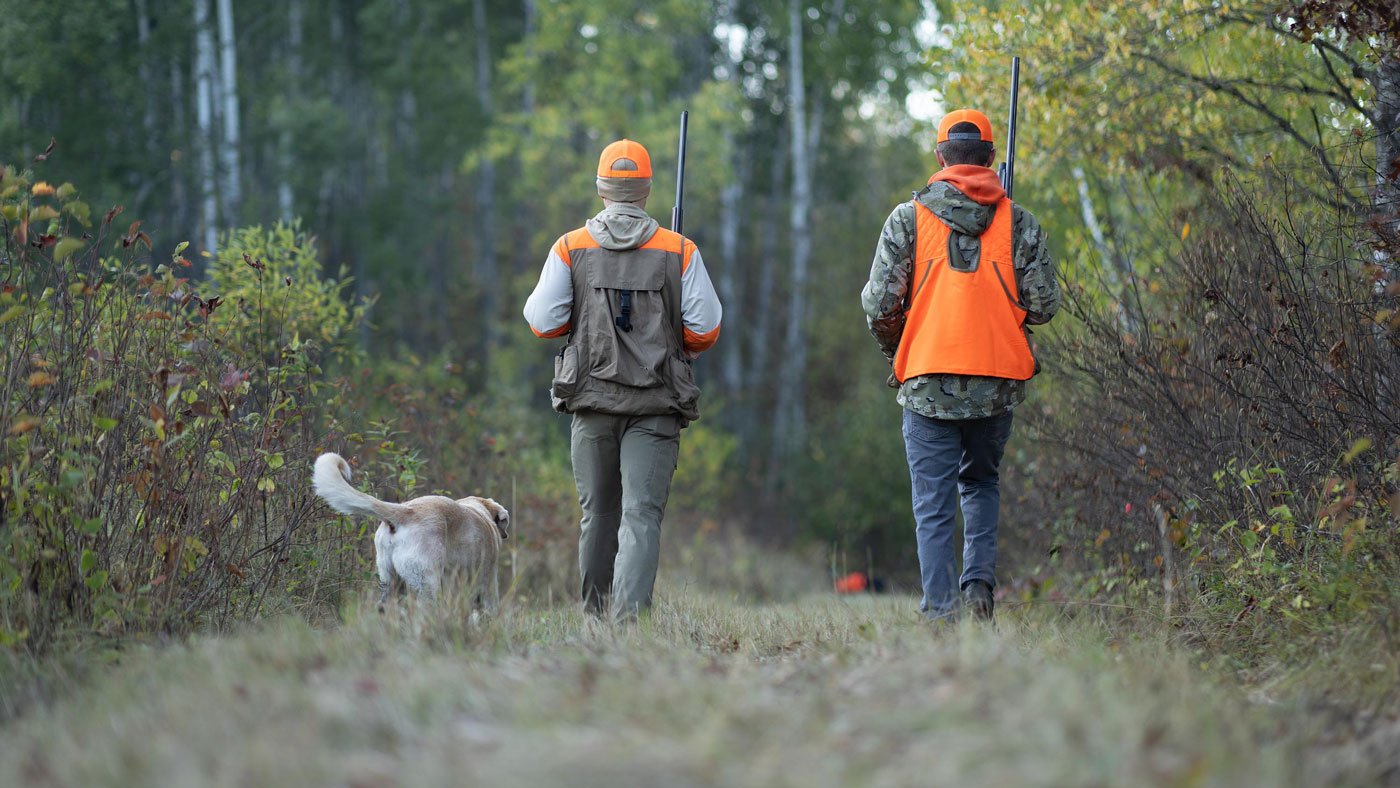- Savage Blog
- Group Hunting Safety for Fall Hunting Seasons
Group Hunting Safety for Fall Hunting Seasons

A cool fall morning giving way to the crack of a rifle, or a chorus of shotgun blasts, is a sure sign that fall hunting is in full swing. Millions of hunters will take to the woods, the fields, and the marshes to pursue a variety of game animals this fall, from pheasants to whitetail deer. For many, they’ll head afield with family and friends as a part of long-held annual traditions. While hunting with others is fun, it’s important to remind yourself before each season of group hunting safety.
Whether you’re hitting the field for a day of upland bird hunting, taking a group to the marsh for a morning waterfowl hunt, or heading out with the family for a deer drive, safety is always the top priority. Read on as we review some tips and reminders to keep in mind when you’re preparing your group hunts this season.
Making a Game Plan
Just like you would plan out any hunt by yourself, a group hunt should have a carefully drawn up plan with safety at the forefront. When more hunters are involved, there are more opportunities for accidents if everyone is not on the same page. Making a plan with your group helps keep everyone on the same page.
Know Who’s Hunting
The first part of your plan should be to know who is hunting in your group. How many hunters will there be? Are there youth hunters? Hunters who need assistance? These considerations can factor into your group spacing, pairing up hunters, and where hunters should be placed in your group. For example, if you’re hunting with a large group of hunters, it may be best to break up into smaller groups to keep good spacing between hunters. Make sure you know how many hunters you’ll be sharing a blind with, or walking with, and where everyone is positioned.
If you’re hunting with dogs, keep a mental note of how many dogs you’re working with and roughly where they are. Keep an eye out for vests and collars, and make sure birds are flushed high enough off the ground before taking a shot.
Know the Terrain
When you’re hunting as a group, knowing the terrain is key to a successful hunt. If you have a pre-planned route to walk, such as on an upland hunt or a deer drive, take terrain features into account. If you encounter obstacles like large ditches, timber draws, or fence lines, try not to split your group up. Having hunters on each side of the obstacle can be dangerous, especially if your view is obstructed. If you do have to split your group up, make sure all hunters know what direction is off limits for shooting. Make sure all hunters within the group have a clear line of sight to each other, and that blind spots are not created by the terrain.
Know the Conditions
Check when legal, safe shooting light is for every hunt before you head out, and make sure everyone in your group is aware of when they can start shooting. Keep an eye on inclement weather, especially when it comes to visibility. Thick fog can put a quick damper on a group hunt when visibility is limited, so make sure everyone in your group can be seen. Know the limits of your crew and how adverse weather conditions may affect your hunt.

Shooting Safety
Firearm safety is always important, especially when it comes to group hunting safety. When more than one hunter is involved, it adds to the complexity of a hunt. Preventing accidents starts with having a good awareness of when and where you should be shooting.
Zones of Fire
The first step for shooting considerations for group hunting safety is establishing zones of fire. A zone of fire is a limited area where you are focusing your shots. Zones of fire are especially useful for upland hunting or deer drives where your group is strung out in a line. Having a zone of fire for each hunter, usually no greater than 45 degrees, ensures that hunters won’t be aiming too close to each other and putting other hunters in the line of fire.
Watch Your Barrel
When you’re hunting in close quarters, like in a duck blind, pay special attention to your muzzle control. Make sure your firearm is being solidly held in place when not in use to avoid it falling over and preventing opportunities for accidental discharges. Also, ensure you err on the side of caution when you're jumping up or lining up for a shot. Keep your shots to your zone of fire, and make sure you’re not accidentally swinging your barrel too far over near other hunters.

Group Visibility
Visibility is another key to ensuring good group hunting safety, especially when your group is spread out on a hunt. If you’re participating in a deer drive or hunting upland birds, make sure you wear some blaze orange to make yourself more visible. Many states will require it, but even where it is not required, wearing orange is a good idea to help make yourself stand out.
It’s also important to keep a couple of important rules from your time in hunter education classes in mind. First, when aiming at a target, verify what you are aiming at to ensure it is 100% your intended target. If you have any doubts, don’t pull the trigger. Second, don’t shoot at sounds. Make sure you can see your target clearly, and know both what is in front and behind it before taking your shot.

Educational Resources
If you’re looking for more information on group hunting safety, the best place to start is with hunter education! Even if you’re exempt from your state’s hunter education requirement, taking a hunter ed class is a great way to learn how to keep yourself and others safe in the field. You can find local classes at your state wildlife agency’s website or through the International Hunter Education Association. Both of these sources can provide you with great information on how to come up with a plan to keep yourself and others safe on a hunt.

When it comes to group hunting safety, it’s always a group effort. Make sure everyone you are hunting with knows their zones of fire, is wearing the proper hunter orange, and understands hunter education and firearm safety rules. By working together and promoting safe field practices, everyone can come home happy with a season full of hunting stories and the excitement for another season of hunting traditions.

